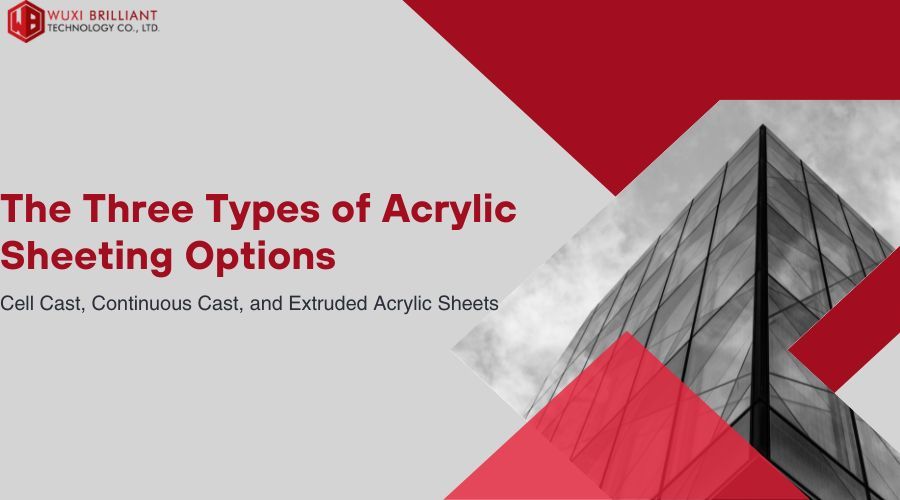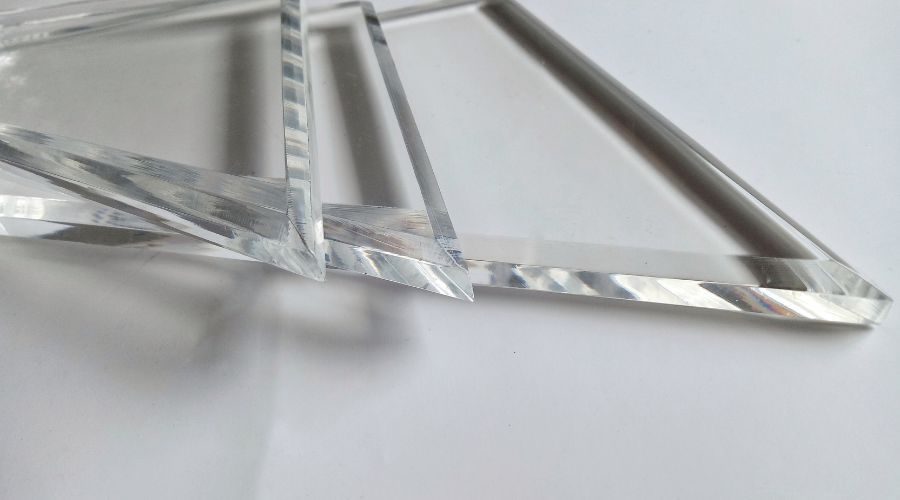
At Brilliantplastics, we understand the importance of choosing the right type of acrylic sheeting for your specific application. Acrylic, commonly referred to as plexiglass, has become a popular alternative to traditional glass due to its superior resistance to discoloration, impact, and chemicals. However, it's crucial to be aware of the different manufacturing processes involved in producing acrylic sheets, as each type offers its own set of advantages and disadvantages. In this article, we will delve into the three main types of acrylic sheeting: cell cast, continuous cast, and extruded acrylic sheets.
Cell cast acrylic sheet is manufactured by pouring melted liquid PMMA (polymethyl methacrylate) resin between two glass plates. This process results in several unique characteristics that make cell cast acrylic sheet stand out:
Cell cast acrylic exhibits the least amount of expansion and contraction among the three types. This property ensures dimensional stability, making it an excellent choice for applications that require precise measurements.
When it comes to thickness tolerance, cell cast acrylic sheet has a standard range of .118" to .500", with a tolerance of +/- 8%. While it may have a slightly higher margin of error compared to other types, it remains a reliable option for various projects.
Due to its high molecular weight and minimal internal stress, cell cast acrylic is the preferred material for cutting and routing processes. Its structural integrity allows for precise shaping and intricate designs.
Cell cast acrylic sheet offers the widest selection of colors, providing you with ample choices to match your desired aesthetic. From vibrant hues to subtle tones, this type of acrylic sheeting caters to a broad spectrum of design preferences.
Thanks to its exceptional quality, cell cast acrylic is widely used in various industries. It serves as the standard material for signage, aquariums, high-end fabrication, and any application that demands superior clarity and durability.
Continuous cast acrylic sheets are manufactured by pouring melted liquid PMMA resin between two belts of polished stainless steel. Let's explore the distinctive features that set continuous cast acrylic apart:
Continuous cast acrylic sheeting offers the highest level of material consistency, making it an ideal choice for applications where uniformity is paramount. This type exhibits minimal expansion and contraction, ensuring stability even in challenging environments.
Continuous cast acrylic boasts the second-best thickness tolerance among the three types. With a range of sizes available up to 9' wide and 16' long, it offers versatility in terms of sheet dimensions, enabling you to find the perfect fit for your project.
The reliable consistency and structural integrity of continuous cast acrylic make it the preferred choice for forming and fabrication processes. Whether you're creating complex shapes or large-scale installations, this type of acrylic sheet provides excellent workability.
Continuous cast acrylic is widely used in skylight applications, thanks to its superior clarity and resistance to UV radiation. It allows ample natural light to pass through while ensuring long-lasting performance and durability.

Extruded acrylic sheets are produced by pushing semi-soft melted resin between rollers and cutting it to the desired size. Here are the key characteristics of extruded acrylic sheeting:
Extruded acrylic offers the best thickness consistency among the three types, ensuring uniformity across the entire sheet. This attribute is particularly important for applications that require precise thickness, such as architectural designs or glazing applications.
Compared to cell cast and continuous cast acrylic, extruded acrylic exhibits a higher level of expansion and contraction. It is essential to consider this factor when planning for thermal expansion or contraction in your project.
Extruded acrylic sheeting is relatively soft and easy to work with. It can be easily cut and glued, making it a popular choice for DIY enthusiasts and projects that require on-site modifications.
Due to its favorable thickness consistency and ease of handling, extruded acrylic is commonly used in displays and replacement windows. Some signage applications also utilize extruded acrylic sheets due to their cost-effectiveness.
Understanding the differences between cell cast, continuous cast, and extruded acrylic sheets is essential for selecting the most suitable material for your specific needs. Each type offers distinct advantages and considerations, ensuring you can find the perfect acrylic sheeting to meet your requirements.
At Brilliantplastics.com, we offer a wide range of high-quality acrylic sheeting options, including cell cast, continuous cast, and extruded acrylic sheets. Our commitment to providing exceptional products ensures you can rely on us for all your acrylic needs. Contact us today to learn more or to discuss your project with our knowledgeable team.